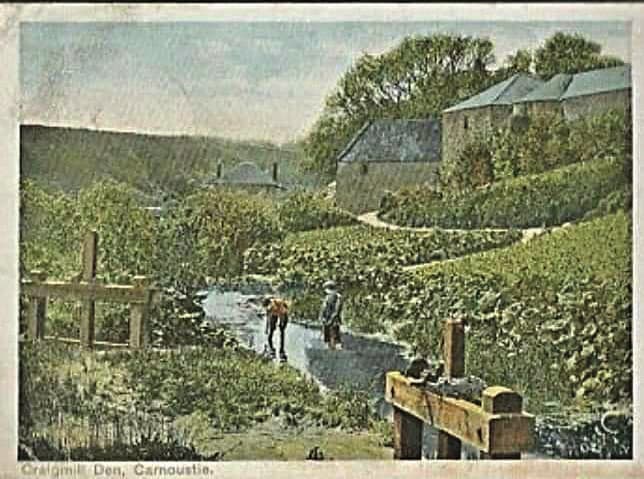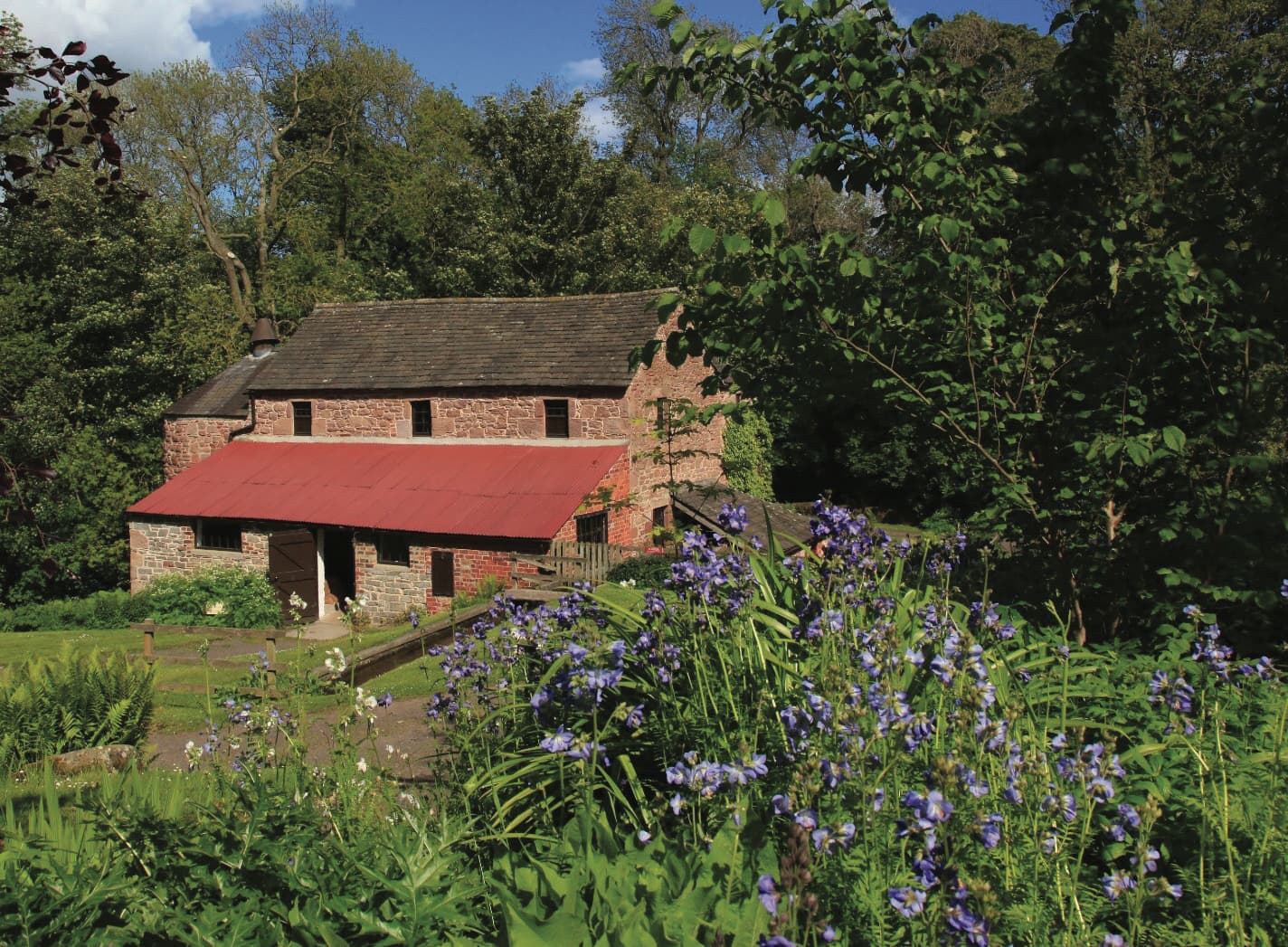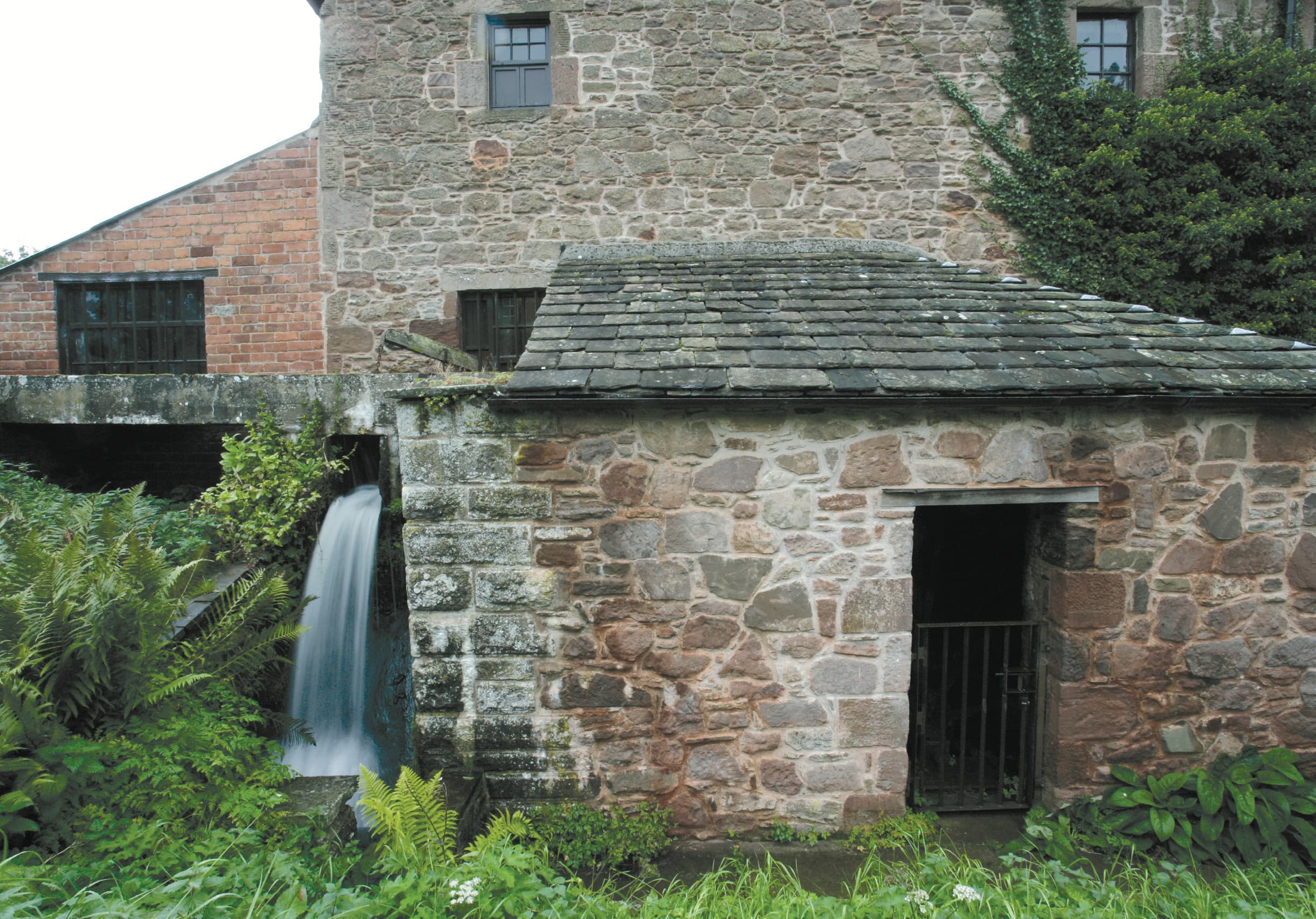

The mill is set in a beautiful landscape, where the water trickles past, birds sing in the woodland on the banks of the burn, and wildflowers adorn the meadows. There is a waymarked path beside the shallow lade to the mill pond (and beyond), following the Barry Burn. A wide variety of wildlife can be seen here. Keep watching the stream at Barry Mill, or at least the pond area, and you might be lucky enough to see a flash of blue; this will be the kingfisher. Look for a slight movement on the water’s surface – it might be one of our playful otters as they glide through the burn, ears flat on their head. On a summer’s evening you might hear the call of a tawny owl from the woodland nearby, where roe deer also abound. Common pipistrelle bats are frequent flyers at night, and it is a breathtaking spectacle to see them take to the sky at dusk.
Peaceful Barry Mill might be a haven of tranquillity now, but it was once the beating heart of a rural community – supplying food, providing a place for trade and gossip, and witnessing the transition to an industrial society. The water-powered mill produced oatmeal and other foods, as well as providing work for local people, for almost 800 years – right up until 1982.

The National Trust for Scotland began to care for the mill in 1988, and actively conserve and repair the building and machinery. A guided tour of the mill explains the process of milling grain into oatmeal: storage, drying, cleaning, milling and sieving. The mill also shares the story of the millers, who harnessed the seemingly tranquil Barry Burn to power the engineering triumph seen inside.
Barry Mill is now one of only a handful of mills powered by water. Rebuilt after a fire around 1815, it is probably the largest and finest example of its type still in operation. In Angus alone in 1794, a map shows there were 165 mills, 141 of which were meal mills. In 1800, an estimated 60,000 mills in the UK were feeding the population – these mills were the food factories of their day.

The Carnoustie Green Circular was funded by Seagreen Wind Energy and created by the Carnoustie Community Development Trust.